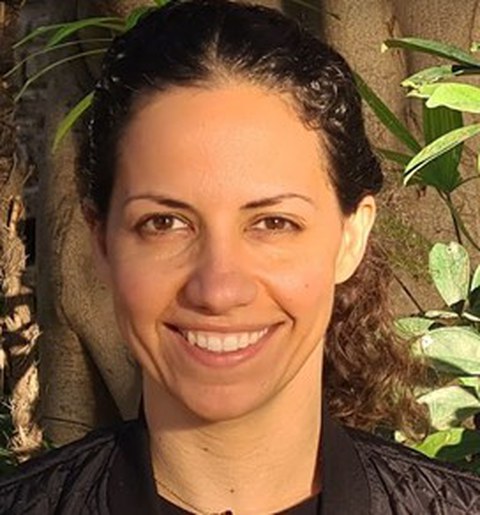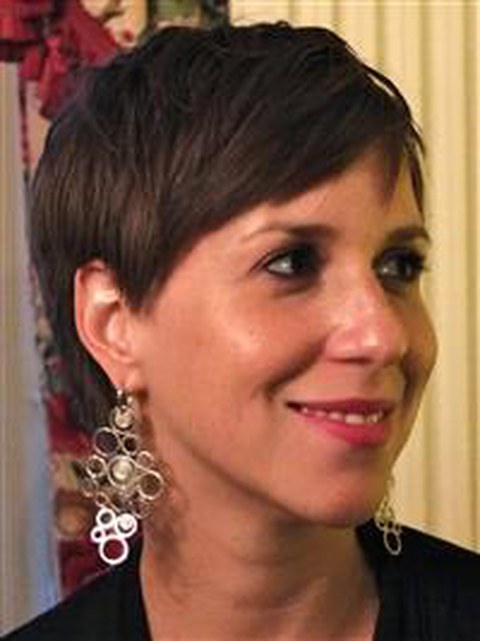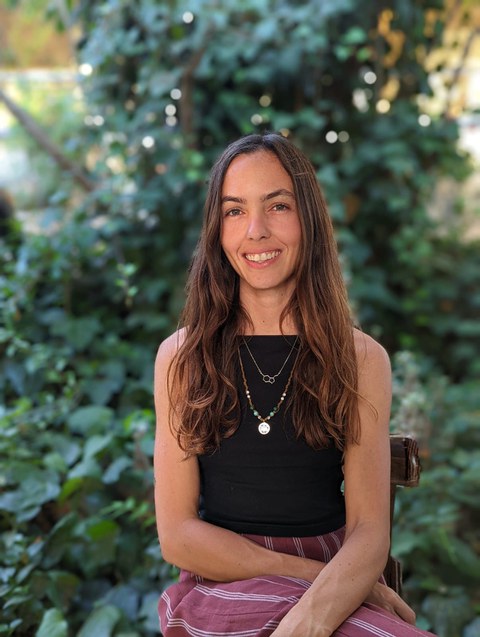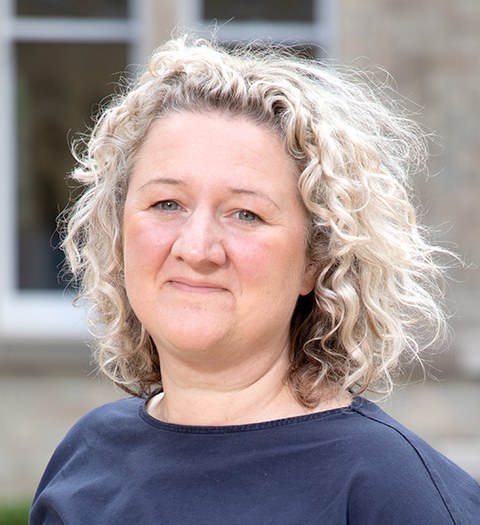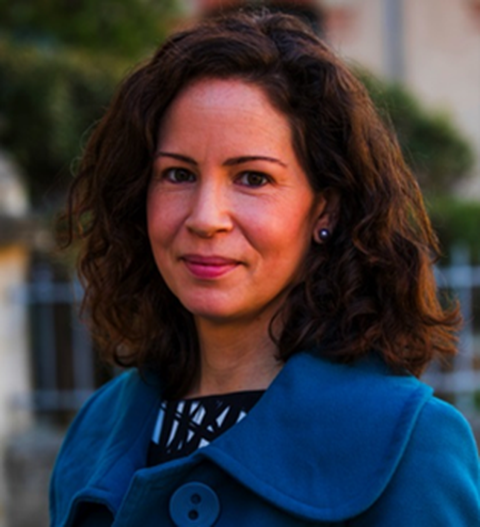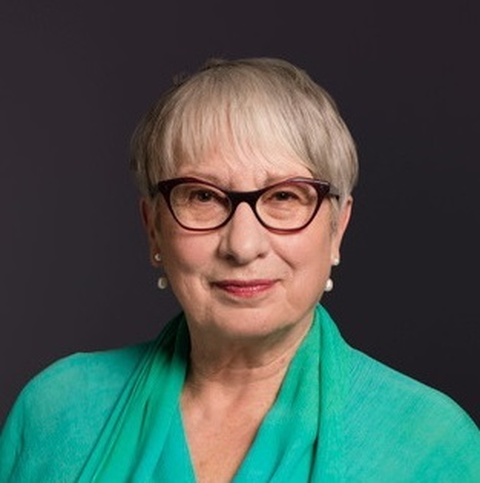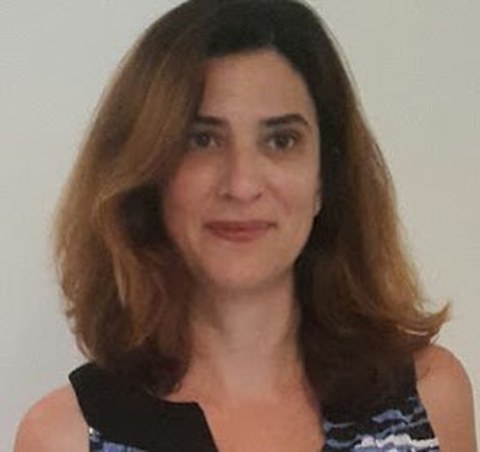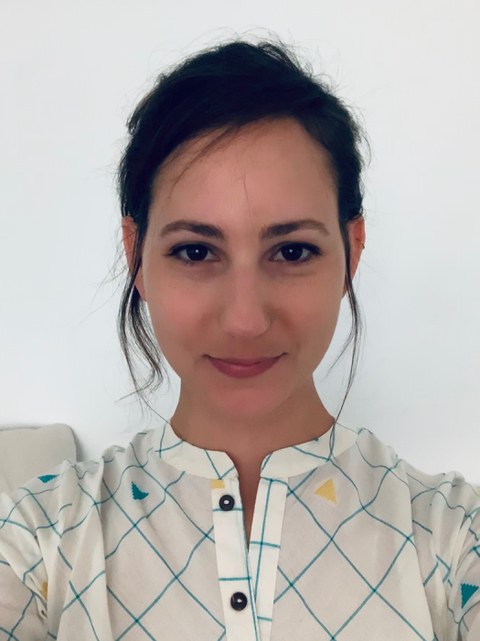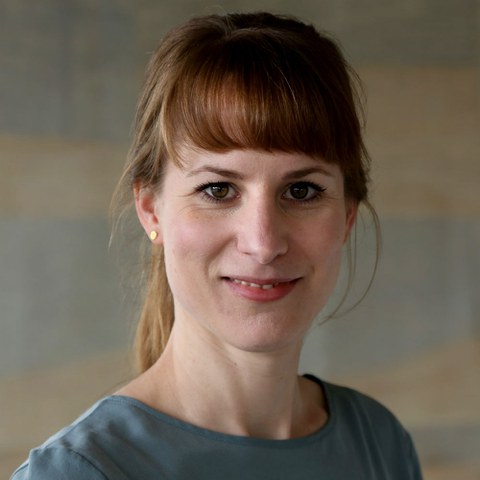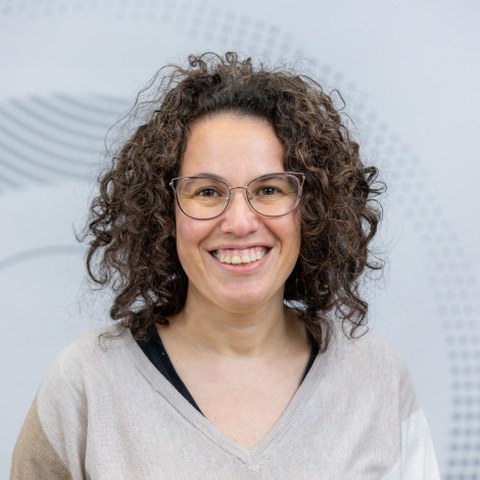SOCIALBRIDGES 6: WOMEN IN SOCIAL NEUROSCIENCE
23 March 2023
08:50 WELCOME by Prof. Dr. Merle Fairhurst (TU Dresden) and Prof. Dr. Ilanit Gordon (Bar-Ilan University)
09:00 Soapbox Talk by Prof. Dr. Emily Cross (Macquarie University)
Emily leads the Social Brain in Action Laboratory, based jointly in Glasgow and Sydney (and soon to move to ETH Zurich). Her team embraces interdisciplinarity to explore questions concerning how we learn via observation, acquire motor expertise, derive aesthetic pleasure from the performing arts, and effectively collaborate with embodied robots via research paradigms that span technology, the arts, and biological and social sciences. She is also passionate about training the next generation of research scientists, with a particular focus on the many manifestations of research ethics. When not sciencing, Emily loves traveling and exploring the great outdoors with her two young sons.
Title: The plan is… There is no plan.
When writing a cover letter for a job application, presenting a talk summarising your career trajectory, or answering questions in an interview about your future research ambitions, you’ve probably been advised to build the most compelling and coherent narrative possible. But what if the path you’ve taken so far is better described as meandering than laser-focused? What if the parts about research that you find most exhilarating are the questions and the people, not the tireless pursuit of cultivating the perfect CV and/or adding ever more numbers to your publication list or grant capture summary? Can you still survive and thrive in a field as fiercely competitive and rapidly evolving as social neuroscience? Maybe. In this talk, I won’t offer any earth shattering insights or tried and true career advice, but will instead advocate for the benefits of a lumpy, rocky, or otherwise circuitous career path, and will welcome discussion with participants about their own journeys.
09:30 Fishbowl Session
Presenters
Dr. Sarah Boukarras (Sapienza University)
Sarah is a postdoc researcher at the Social and Cognitive Neuroscience Lab in Rome (Sapienza University). Her research activity spans from the effects of social status on cognition to the neural basis of motor interactions.
Title: Investigating the emergence of physiological synchrony during joint action: the role of task-related motor parameters and individual dispositions.
Physiological synchrony, the temporal alignment of biological states between individuals interacting together, has been repeatedly observed over a variety of tasks and interaction types. However, it is unclear to what extent its magnitude can be influenced by task-related movement features and/or by individual differences in personality traits. To fill this gap, we recorded the heart rate of forty same-gender dyads engaged in a joint action task. Participants were asked to grasp as synchronously as possible two bottle-shaped objects either in a “free” condition, where both shared the same amount of information, or in a “leader-follower” mode. From the task, we extracted several motor parameters, while dyadic personality traits were quantified by averaging the two members’ scores at self-report questionnaires. Physiological synchrony was indexed as the maximum cross-correlation observed between the two participants’ heart rate time series. Preliminary results indicate that dyads who were more synchronous in starting their movement together also aligned more at the physiological level. In addition, we observed that dyad-level empathic traits were related to both physiological synchrony and to the tendency to start moving together. Overall, our data indicate that individual dispositions might promote physiological alignment during joint action by influencing task-related motor features.
Dr. Ortal Shimon-Raz (Interdisciplinary Center Herzliya)
I am a clinical psychologist and research associate at Reichman University’s Center for Developmental Social Neuroscience, led by Professor Ruth Feldman. My studies aim to shed light on brain mechanisms underlying maternal responsiveness during the infant’s first year of life. In my clinical training, I work with infants and children. My current research project seeks to assess the bio-psycho-social impacts of a newly developed short-term play therapy designed to help preschool children who are suffering from anxiety disorders.
Title: Mothers' cross-brain synchrony patterns selectively track social cues
Cross-brain synchrony is a relatively new area of research that taps the similarity of neural response across individuals to a shared ongoing event. Whereas infant stimuli and attachment reminders have been shown to trigger activations across the “parental caregiving network” (PCN), no study to date examined whether its exposure to attachment reminders elicits cross- brain concordance. The current fMRI study explores cross-brain synchrony to attachment reminders among mothers. We asked: Do mothers synchronize their neural response to attachment reminders in the PCN; Do social conditions (mother and infant together) trigger a more wide-spread neural synchrony compared to alone conditions (infant/mother alone); As oxytocin is a modulator of the social brain, we examined its impact on cross-brain synchrony within an OT/placebo-administration design. Participants observed 4 daily ecological video vignettes showing a mother and an infant apart (Alone) and together (Social). Two analysis approaches were used to examine differences in inter-subject correlation (ISC): a theory-driven approach that focused on 7 preregistered ROIs within the PCN, and a data-driven approach that tested the entire brain. Results of both approaches demonstrate widely spread cross-person synchrony, including limbic, paralimbic, and cortical regions of the PCN in response to mother-infant videos. In PCN regions such as the insula, ACC, STG, PFC, and striatum, the “Social” context triggered significantly greater ISC compared to the “Alone” context. The degree of cross-brain synchrony in the ACC dynamically followed moment-by-moment variations in mother-infant coordination, suggesting that moments of behavioral synchrony elicited greater cross-brain synchrony. Our findings support the importance of the PCN in facilitating mammalian affiliative bonds and highlight its role in the formation of shared neural response within two-person biobehavioral synchronization.
Experts
Prof. Dr. Suzanne Dikker (Vrije Universiteit Amsterdam)
My work merges cognitive neuroscience, performance art and education. She uses a ‘crowdsourcing’ neuroscience approach to bring human brain and behavior research out of the lab, into real-world, everyday situations, with the goal to characterize the brain basis of dynamic human social communication. As a Research Professor at the Max Planck — NYU Center for Language, Music and Emotion (CLaME) and co-founder of the art/science collective Harmonic Dissonance, I lead various projects, including MindHive, a community science platform that supports student-teacher-scientist and community-scientist partnerships for human brain and behavior research.
Prof. Dr. Yulia Golland (Interdisciplinary Center Herzliya)
Human beings are shaped and function in continuous interaction with other people. Being inherently social creatures we have biologically wired mechanisms to communicate, understand and connect to others. The main goal of my research is to study the biological and behavioral mechanisms that support social interactions.
Social interaction is not just a theoretical topic of my research, but is an integral part of my work, as I conduct my research in full collaboration with Dr. Nava Levit-Binun, in the Resilience and Social Interaction Lab (LaRSI), which was founded under the Sagol Center for Neuroscience and Human Development. This productive and enriching collaboration constantly reminds me the true benefits of social interaction.
Research in the lab incorporates cutting-edge methodologies to study neural, autonomic and behavioral responses of individuals situated in various interpersonal situations. Many of our studies investigate how the emotional information is transferred from one person to another. In particular, we ask how reciprocal interpersonal transmissions lead to shared emotional experiences.
In addition, we have a special interest in a fascinating social phenomenon - interpersonal synchrony. We investigate how individuals can become physiologically and behaviorally synchronized to each other in social situations and what are the consequences of interpersonal synchrony for social functioning.
Prof. Dr. Ivana Konvalinka (Technical University of Denmark)
Ivana Konvalinka works in the field of social neuroscience. Her research investigates intra- and inter-personal mechanisms underlying mutual social interaction at a behavioural, neural, and physiological level. She works on developing joint action paradigms and multivariate methods for quantifying two-person processes. In particular, she is interested in i) how people coordinate their actions in real time, ii) what neurophysiological mechanisms underlie mutual interaction, particularly how simultaneous brain recordings (i.e. dual EEG) can help better understand the neural basis of social interaction, and iii) the mechanism by which people's physiological (i.e. cardiac) signals couple together during action coordination and action observation.
10:00 Fishbowl Session
Presenters
Monika Malon (University of Warsaw)
Monika is a PhD candidate in the Graduate School for Social Research. She graduated with honors from University of Warsaw obtaining a BA in Applied Sociology and Social Anthropology (2020) and MA in Cognitive Science (2022). She is a four-time laureate of Rector’s Scholarship for Best Students, awarded with Faculty of Psychology Dean’s distinction for significant scientific achievements. She gained experience working with both neurotypical participants in the Institute of Psychology PAS and schizophrenia patients in the Institute of Psychiatry and Neurology in Warsaw. She was employed as a Research Assistant in three grants funded by the National Science Center conducting behavioral and neurophysiological assessments. Her scientific interests include broadly understood human social nature explored on diverse levels of explanation and are currently focused on the topic of her PhD, that is subjective social isolation and prosocial tendencies.
Title: Is loneliness linked to prosociality? A meta-analysis.
Although Hannah Arendt emphasized the relationship between loneliness and self-centeredness already in the 1950s, empirical evidence for this relationship remains inconclusive. According to the Evolutionary Theory of Loneliness (ETL), loneliness intensifies one's urge to approach others and, at the same time, focuses their attention on self-preservation in the face of potential social threats. The current meta-analysis aims to estimate the strength of the link between loneliness and prosociality. A systematic search of PsycINFO, PubMed and Scopus was conducted in line with PRISMA 2020 guidelines to identify studies investigating the link between loneliness and prosociality. Only peer-reviewed studies using quantitative methods were included into the final sample and random effects model calculations (k=32; n=42,353). We have identified a significant albeit weak negative correlation between loneliness and prosociality [r=0.109, 95% CI: (-0.1833, -0.0343), p=0.004]. Our findings support the hypothesis that loneliness is negatively correlated with prosociality. However, since this effect only accounts for a small portion of prosociality variance, additional research on other social functioning factors, such as social status and social cognitive bias, is necessary.
Inbal Ravreby (Weizmann Institute of Science)
Title: The many faces of mimicry depend on the social context
One of the richest and most powerful tools in social communication is the face. Facial expressions are a prominent way to convey high-dimensional, dynamic information, such as emotion, motivation, and intentions. Previous research has linked mimicry of facial expressions to positive human interaction (e.g., mutual agreement). In this study, we investigated in a real-world setting whether the mimicry pattern of multiple affective facial expressions depends on the interpersonal attitudinal agreement between interlocutors. We analyzed video clips of Democratic or Republican American politicians being interviewed by either a political ally or an opponent (N total = 150 videos). The interviews showed either agreement between two Republicans or two Democrats, or disagreement between members of each affiliation. Using image processing tools, we extracted the intensity of the facial action units for each time-point. In contrast to the prevalent notion that positive social interaction, such as agreement, fosters mimicry, we found mimicry of all facial expressions in both agreement and disagreement. Moreover, the pattern of the facial expressions mimicry depended on the agreement condition such that an artificial classifier could successfully discriminate between the agreement conditions. Our results suggest that not only positive interpersonal communication is characterized by mimicry, but also negative one. This implies that in real-life interactions mimicry may be a tool to understand others and thus successfully communicate, regardless of the positivity of the social interaction. Whereas the existence of mimicry may be indispensable for social communication, the specific pattern of facial expressions mimicry depends on the social context.
Argaman Bell (Tel Aviv University)
My name is Argaman, I am 28 years old and I live in Givat Olga. I grew up in Eilat Israel, and I love all of the above and under water sports. I am a PhD student at Tel Aviv University, under the mentoring of both Dr Yaara Yeshurun and Prof Galit Yovel. My research area is social interactions, but I am interested specifically in synchronization of facial movements and language between individuals in different and “in the wild” social interactions. We aim to find the factors that separate an individual as a unique unit across different contexts, as well as the factors that change when the social context is changing.
Title: Better Together? Shared Experience Effect on Enjoyment and Facial Expressions
Sharing experiences with others is a prominent part of people’s social life. It was shown that sharing an experience with close others amplifies one’s emotional response to the experienced event. In this work, we tested how friend’s virtual (Zoom) presence shapes individual’s enjoyment and explored the role of facial expressions in driving this effect. In Study 1, participants (n=184) listened to short audio-clips of different (humoristic and non-humoristic) contents alone or with a friend. We found that enjoyment was affected by the presence of a friend in a content-dependent manner; one type of humor (knock-knock jokes) was more enjoyable with a friend than alone, whereas another type (live stand-up) was less enjoyable with a friend. However, listening together with a friend amplified the intensity of happy facial expressions participants expressed, regardless of how much they enjoyed the clip. Moreover, friends were synchronized in their happy facial expressions during the joint listening, and the level of synchronization was correlated with their enjoyment. Intriguingly, those effects of co-experiencing on enjoyment and facial expressions disappeared when participants listened to the audio clips with their eyes closed. In Study 2, we tested whether different expectations of enjoying the two humoristic contents led to these opposite enjoyment patterns. Participants (n=152) rated their expectations of enjoying knock-knock jokes and live stand-up. We found that the presence of a friend served as a “social feedback loop” – amplifying the gap between enjoyment expectation and experienced enjoyment. Overall, our results highlight the communicative role of facial expressions, and their role in shaping enjoyment during shared experiences.
Experts
Prof. Dr. Bridget Waller (Nottingham Trent University)
Bridget Waller is Professor of Evolution and Social Behaviour at Nottingham Trent University (UK) and Director of the Centre for Interdisciplinary Research on Social Interaction. The overarching focus of her work is the evolution of social communication, particularly nonverbal behaviour and facial movement. She has specific expertise in human and non-human primate facial expression and uses species-specific modifications of FACS (Facial Action Coding System) to make anatomically based, systematic comparisons between species. Currently, she holds a European Research Council (ERC) Consolidator Grant (FACEDIFF - Individual differences in facial expressivity: Social function, facial anatomy and evolutionary origins).
Prof. Dr. Michal Lavidor (Bar-Ilan University)
Prof. Michal Lavidor has a BSc in Psychology and Computer Science from the Hebrew University and a PhD in Psychology from Bar Ilan University, Israel. In 1999 Lavidor moved to the UK as a postdoctoral fellow at York University, after which she took a faculty position in Hull. Winning the ERC 2007 start up grant opened the way back to Israel, and now Lavidor is a full Professor in the Psychology department and a member of the Brain Research Centre in Bar Ilan University. Her current research interests include creativity, gestures comprehension and cognitive enhancement employing a variety of cognitive and neuroscience methods.
11:00 Soapbox Talk by Prof. Dr. Ruth Feldman (Interdisciplinary Center Herzliya)
Title: Women in Neuroscience; Myth, Harsh Reality, or Advantage
The question of whether the phrase "women in neuroscience" is a reality, an oxymoron, or a distinct pathway to knowledge will be at the center of my talk. I will bring three perspectives on the topic; the scientific, the social, and the personal and detail the conceptual foundations that contribute to each perspective, their potential consequences for science, and their implications for social policy, education, and society-at-large. I will then describe my own path and the choice to begin my academic career as a young mother with research on mother-infant synchrony, which then expanded into my overall empirical program on biobehavioral synchrony across ages, relationships, neurobiological substrates, and social groups.
11:30 Fishbowl Session
Presenters
Dr. Leehe Peled-Avron (Bar-Ilan University)
Title: The effects of psilocybin (‘magic mushrooms’) on social touch perception in individuals with resistant major depressive disorder
Individuals with depression often experience difficulties in social interactions. Social interactions consist of both verbal and non-verbal means of communication, among which is social touch which is used to convey several types of emotion. Depression is associated with negative attitudes towards social touch and these negative attitudes mediate interpersonal difficulties. Psilocybin, the active compound in several types of fungi (‘magic mushrooms’) has been shown to alleviate symptoms of depression. Yet its effects on social interaction and specifically on social touch have yet to be explored. In this study, we examined the effect of psilocybin administration on perception of social touch in individuals with resistant major depressive disorder. Participants watch photos of either humans or inanimate objects touching or not. Participants are then asked to rate their emotions towards the objects in the photos. The responses are recorded a week before and a week after administration of 25mg of synthetic psilocybin during psychedelic assisted psychotherapy. 10 participants have completed the treatment (5 were administered psilocybin and 5 placebo). Results demonstrate a significant increase in emotionality ratings in the human touch condition after psilocybin administration, no such difference was found for the ratings of the control conditions or following placebo administration. These results point to a potential improvement of the attitudes towards social touch following a psychedelic intervention in depression and may suggest a possible mechanism through which psilocybin alleviates depressive symptoms.
Dr. Irene Valori (TU Dresden)
With a master's degree and a doctorate in developmental clinical psychology obtained at the University of Padova, Irene Valori has expertise in the perceptual, motor, and cognitive aspects of humans’ interaction with virtual and multimedia environments, and the differences related to typical and neurodiverse developmental trajectories. As a postdoctoral researcher at the Chair of Acoustic and Haptic Engineering and the Centre for Tactile Internet with Human-in-the-Loop at the Technische Univeristät Dresden, she investigates the role of affective touch in promoting interpersonal trust in technology-mediated human-to-human exchanges or human-machine interactions.
Title: Trust and touch: social bridges to robots
Abstract: Social robots are a technology of great interest for providing support to people in situations of social isolation, with specific disabilities or learning needs. Trust is crucial for use and interaction with this specific technology and can be enhanced by the possibility of interacting with the robot through affective touch, provided touch is perceived as appropriate and pleasant. Beyond the technical challenges for which hugging a robot is still a remote possibility in everyday life, little is known about what characteristics of human-robot touch affect people's perception of its appropriateness, pleasantness, and trustworthiness. I will present a neurophysiological study plan in which participants will be exposed to first-person virtual reality scenarios of receiving gentle stroking by either a human or robot avatar, with further manipulation of the visuo-tactile characteristics of touch. I plan to measure self-reported ratings, heart rate as an index of arousal, and activation of neural areas associated with multisensory integration, affective vs. discriminative touch, and trust. The main hypothesis is that interacting with a robot implies different social tactile norms, and that people prefer different types of touch to interact with a robot instead of a human being.
Experts
Dr. Anna Ciaunica (University of Lisbon)
My research to date in philosophy of mind and cognitive science focuses on the relationship between (a)typical forms of self-consciousness, embodiment and social interactions in human and artificial agents. My PhD thesis ‘Physicalism and Qualia’ tackled the mind-body problem and was awarded by the University of Burgundy, Dijon, France. During my first postdoctoral assignments in Switzerland and Portugal I have examined the link between disrupted sense of self, (dis)embodiment and social connectedness in conditions such as Autism, Möbius Syndrome and Depersonalization Disorder. I am currently the Principal Investigator of three interdisciplinary projects. (1) The first looks at the relationship between altered sense of self and social alienation in Depersonalisation. (2) The second examines self-consciousness and social interactions in human and artificial agents. In my work, I combine conceptual resources from philosophy of mind and the phenomenological tradition with experimental methods from psychology and cognitive neuroscience; (3) The third looks at the multisensory modulation of the sense of self through bodily movements and action observation in depersonalisation and psychedelic experiences. I am also co-PI of a project looking at the relationship between dreams, sense of self, and self-detachment in clinical depersonalisation (with Dr Helge Gillmeister as PI). And a research team member of a project led by Dr Jane Aspell and Dr Bigna Lenggenhager exploring the sense of bodily self and dreams in depersonalisation.
I am the main coordinator of the Network for Embodied Consciousness and the Arts (NECTArs) – a collaborative platform bringing together artists, researchers, stakeholders, policy makers and people with lived experiences, aiming at fostering creative approaches to timely issues such as self-awareness and (dis)embodiment in our hyper-digitalized world.
Prof. Dr. Rochelle Ackerley (Aix-Marseille University)
We have gained much knowledge in recent years about the mechanisms involved in human touch, from the peripheral encoding of touch to its central interpretation. When most people think of touch, they think about the discriminative, conscious aspects, such as where it happens, for how long, and other sensory factors like roughness, but there is also an emotional, affective side. My group investigates touch from the very encoding to its perception, using microneurography, behavioural, and imaging techniques. https://somatosense.fr/
12:00 PANEL DISCUSSION
Prof. Dr. Uta Frith (University College London)
Uta Frith is a developmental psychologist with a special interest in autism and dyslexia. When Uta began her research, people believed these conditions were of ‘psychogenic’ origin. She therefore set out to link them to the brain and behaviour, changing the mainstream view of these brain disorders along the way.
She developed two of the main theories to explain the core symptoms of autism: ‘lack of implicit mentalising’ and ‘weak central coherence’. Implicit mentalising is the automatic ability to predict behaviour from moment to moment on the basis of mental states such as beliefs and desires. Weak central coherence could be a reason why autistic people excel at focusing on fine detail but fail to see the bigger picture, thus giving rise to some special talents.
Uta has been chair of the Diversity Committee from 2015-2018 and has helped to create materials to explain and combat unconscious bias. She is keen to widen public engagement with cognitive neuroscience and presented a number of BBC Horizon programmes with this aim in mind.
Prof. Dr. Simone Shamay-Tsoory (University of Haifa)
Simone Shamay-Tsoory is Professor of Psychology at the University of Haifa, Israel. Her work seeks to understand the neural mechanisms underlying social behaviour and in particularly empathy. To address these issues she works with various populations of patients as well as with healthy individuals and uses neuroscience tools including neuroimaging, neurostimulation and psycho- pharmacological techniques. Senior Researcher, Brain Activity Project. Website
14:00 Soapbox Talk by Prof. Dr. Antonia Hamilton (University College London)
14:30 Fishbowl Session
Presenters
Dr. Kyveli Kompatsiari (Istituto Italiano di Tecnologia)
Kyveli Kompatsiari obtained her Diploma in Electrical and Computer Engineering in Thessaloniki (AUTH, 2009). In 2012, she completed her studies in Professional Doctorate in Engineering in Eindhoven (TU/e, PDEng), where she specialized in Biomedical Diagnostics. In the period 2013-2016, she worked in Brain and Trauma Foundation, Switzerland, focusing on machine learning and EEG methodology on a diagnosis of various cognitive conditions. She obtained her PhD in Systemic neuroscience (2020, LMU Munich). She conducted the largest part of her PhD in the unit S4HRI “Social Cognition in Human-Robot Interaction” at the Italian Institute of Technology (Genoa, prof. dr. Agnieszka Wykowska) focusing on the impact of social signals, exhibited by iCub humanoid robot, on gaze-mediated attentional orienting. In 2020- 2022, she conducted a post doc in S4HRI (IIT), where among others she focused on interbrain synchronization using a dual-EEG technique. Currently, she is a post doc in SINe lab (prof. dr. Ivana Konvalinka) at DTU investigating both intra- and interpersonal processes underlying real- time dyadic interactions.
Title: Eye contact in human-robot interactions
Eye contact with a social interaction partner is a strong signal. In this presentation, we will demonstrate that eye contact elicited by an embodied humanoid robot can be also treated as a social signal. To this end, we employed a gaze cueing paradigm with iCub humanoid robot as a central cue. Before shifting its gaze, iCub either established eye contact with the participants (eye contact condition) or avoided their gaze (no eye contact condition). Across four experiments, we manipulated the validity ratio (non-predictive, counter predictive cues) and the temporal dynamics of the interaction (SOA: 500 ms or 1000 ms). Our results showed that in no predictive cues, where strategic control was not required, eye contact affected the gaze cueing by prolonging the prioritized processing of the gazed-at locations. In a subsequent gaze cueing study using TMS, we found that the impact of eye contact on attentional orienting arises from social areas of the brain, i.e., dmPFC. Finally, the robot’s eye contact affected participants’ subjective feelings of engagement, fixation patterns and neural responses. Overall, our results show that eye contact with a humanoid robot might be perceived as a meaningful social signal.
Dr. Yael Apter (Interdisciplinary Center Herzliya)
Title: Bio-psycho-social Effects of a Novel Symbolization-Based Psychotherapy for Preschool Children with Anxiety Disorders
Early childhood anxiety has been a focus of interest in recent years (Whalen et al., 2017). The Efficacy of treatment in this age group needs more empirical investigation (Ghandour et al., 2019). The earlier the treatment is initiated the more effective it will be, and with longer beneficial consequences for healthy development (Luby, 2013). Aims: The overarching aim of the study is to evaluate effects of a novel short-term play therapy (IWOTCH) for the treatment of anxiety disorders in preschoolers. Specifically, we aim to compare the effects of IWOTCH and Dyadic therapy (Liberman et al., 2006) on children suffering from anxiety and comorbid disorders. Material and Methods: 80 consecutive referrals to the preschool anxiety clinic at Reichman University. Psychiatric diagnosis will be made by using a combination and integration of the childhood version of the schedule for schizophrenia and affective disorders (K-SADS-PL) (Kaufman et al., 2020) and the Preschool Age Psychiatric Assessment (PAPA) (Wichstrøm, 2012). Diagnosis will be made according to the DSM-5 and DC 0-5. Interactions will be filmed and coded: each five minutes of mother-child, father-child and triadic interactions with pre-selected toys will be videotaped. Interaction will include free play, a challenging task and conflict between parents. Interactions will be coded using the Coding Interactive Behavior manual (Feldman, 1998). Narrative descriptions will be obtained from parents derived from three questions: 1. Describe your child; 2. your child’s problems; 3. How therapy will help or helps these problems. Assessment will be made at baseline and then bi-monthly for six months. The study will comprise of three groups of children: 1. A group of receiving a novel short-term emotion-focused play therapy. 2. Dyadic therapy 3. Control group who will not receive therapy. Assessment will be made at baseline and then bi-monthly for six months. Outcome would be measured by degree of symptom reduction, clinical global impression (CGI) (Berk et al., 2008), and measures of parent-child interaction as measured by the CIB. Conclusions: Early childhood anxiety is a common and serious problem. There is a significance gap in our knowledge about early treatment and effort should research protocols in order to give an impetus for minimizing this gap.
Experts
Prof. Dr. Rachael Jack (University of Glasgow)
Rachael E. Jack is a Professor of Computational Social Cognition, Director of the Facesyntax laboratory, and Head of the Centre for Social, Affective & Cognitive Neuroscience (cSCAN) at the University of Glasgow. Jack’s team studies how facial expressions dynamically communicate social information, particularly within and across cultures, using an interdisciplinary approach that combines social perception, data-driven methods, vision science, modern 3D computer graphics, and computational modelling. Their work informs psychological theories and the design of socially interactive virtual agents in Artificial Intelligence. Jack’s team is currently funded by the European Research Council (ERC). Jack is Associate Editor at Psychological Science, Journal of Experimental Psychology: General, Journal of Experimental Social Psychology, and Affective Science, on the Editorial Boards of Emotion, Journal of Personality and Social Psychology: Attitudes and Social Cognition, and Behavior Research Methods, and ERC Advanced Grant panel member. Jack is Fellow of the Association for Psychological Science (APS), recipient of the American Psychological Association (APA) New Investigator award, the Social and Affective Neuroscience Society (SANS) Innovation award, the British Psychological Society (BPS) Spearman Medal, Association for Psychological Science (APS) Rising Star award, and International Society for Research on Emotion (ISRE) Young Researcher Spotlight. Jack also serves on the committees/boards for the conferences of the Society for Affective Sciences, IEEE Automatic Face & Gesture Recognition, ACM Intelligent Virtual Agents, and the Vision Sciences Society, is Secretary of the Association for Psychological Science (APS) and Chair of the APS Global Engagement Committee.
15:00 Fishbowl Session
Presenters
Dr. Maayan Krispil Alon (Einstein College of Medicine)
Maayan is a Postdoctoral Fellow at the Neuroscience Department, Albert Einstein College of Medicine. She is interested in mechanisms that are involved in the formation of traumatic memories in the brain, and how they affect emotion and behavior. Dr. Krispil-Alon holds a Ph.D. from the Neurobiology Department, at the University of Haifa, under the supervision of Prof. Gal Richter-Levin. Her Ph.D. study focused on sex-specific roles of hippocampal microRNAs in stress vulnerability and resilience. In her current study Maayan is seeking to understand hippocampal subregions’ connectivity with the Retrosplenial Cortex in contextual memory formation.
Title: Sex-specific roles of hippocampal microRNAs in stress vulnerability and resilience
Contrary to intuition, most individuals are resilient to psychological trauma and only a minority is vulnerable. Men and women are known to respond differently to trauma exposure, however, mechanisms underlying the relationship between sex differences and trauma resilience and vulnerability are not yet fully understood. Taking advantage of the Behavioral Profiling approach, which enables differentiating between ‘affected’ and ‘unaffected’ individuals, we examined sex-associated differences in stress exposure effects on hippocampal expression of selected stress-related GABA-A receptor targeting miRNAs. In male rats, increased levels of miRNA-144 and miRNA-33 were observed in the dorsal dentate gyrus (dDG) and ventral dentate gyrus (vDG) respectively, of stress-exposed but unaffected animals. In females, we observed an increased expression of miRNA-144 and miRNA-33 in the ventral cornu ammonis 1 (vCA1) of affected animals. Accordingly, we inhibited miRNAs expression selectively in hippocampal subregions using oligonucleotides, to examine the miRNAs’ causal contribution to either vulnerability or resilience to stress in each sex. Inhibition of miRNA-144 in dDG and miRNA-33 in vDG in males resulted in an increased prevalence of vulnerable animals, while inhibition of miRNA-144 and miRNA-33 in vCA1 in females increased the proportion of resilient animals. The current findings reveal a critical sex-associated difference in the role of miRNAs in stress vulnerability and resilience. This novel understanding of sex-associated epigenetic involvement in the mechanism of stress-related psychopathologies may help improve gender-specific diagnosis and effective treatment.
Dr. Noa Herz (University of Pennsylvania)
Noa Herz is a postdoctoral fellow at the University of Pennsylvania. Her research focuses on elucidating the neural basis of episodic memory and on devising tools for memory restoration in clinical conditions afflicted with memory impairments. Beyond scientific articles she communicates science to the public as a writer in digital magazines such as Aeon and Alaxon.
Title: When memory fails: neural understanding of episodic memory deficits
Memories serve as the building blocks of our mental life; our sense of self derives from our ability to remember our past. When disease or injury hamper our efficiency in storing or retrieving memories, our whole mental and social life are shattered. At other times, our memories may be too strong - they can intrude unwillingly into consciousness, negatively affecting our mood and lead to functional impairment. In this presentation I will demonstrate my research attempts at understanding the neural basis of two episodic memory failures – involuntary retrieval of emotional events, and false recollection. In particular, I will describe a recent project in which we used direct electrical recordings from the human hippocampus to investigate the neural process underlying contextual misattribution in false memories. In two large datasets, we characterize key physiological differences between correct and false recalls, emerging immediately prior to vocalization. By differentiating between false recalls that share high or low contextual similarity with the target context, we show that low frequency activity in the hippocampus tracks similarity between the current and retrieved context. These findings elucidate our ability to distinguish between memories that happened under different occasions and provide a possible mechanism for false recall.
Experts
Prof. Dr. Siri Leknes (University of Oslo)
I am a professor of Social and Affective Neuroscience at the Dept. Psychology, University of Oslo. A cognitive neuroscientist by training, I completed my PhD on Pain, reward and relief at the University in Oxford in 2008. My supervisor was the ever inspiring Professor Irene Tracey, head of the PAiN group. As a postdoc in Gothenburg and Oslo, the eminent Professors Håkan Olausson and Bruno Laeng were my mentors. Drawing on the complementary perspectives of cognitive psychology (Laeng), central neurophysiology (Tracey) and peripheral neurophysiology (Olausson), I then set out to establish my own research approach, summarised in these LAB lab pages.
The specific research questions addressed in my projects range from pain to emotion perception to neuroendocrinology and visual attention. Yet, the overarching question is always the same: How do the brain and the body give rise to feelings that humans can perceive, and how are these feelings connected to our choices and behaviour.
16:00 Fishbowl Session
Presenters
Cynthia Cabañas (University of London)
Cynthia Cabañas is a PhD Candidate in the Department of Psychological Sciences, Birkbeck, University of London under the supervision of Dr. Tim J. Smith and Dr. Atsushi Senju. She studied Psychology in Complutense University of Madrid and an MA in Neuropsychology before completing a double MSc Brain and Mind Sciences in University College London and Université Pierre et Marie Curie and École Normale Supérieure. She is interested in the role of theory of mind on film narrative comprehension in neurotypical and neurodiverse populations and the cinematic formal features elements that filmmakers use to enhance these processes.
Title: Investigating the Role of Spontaneous Theory of Mind on the Moment-To-Moment Processing of Dramatic Irony Scenes in Film
Similar to real life, watching cinema involves interpreting characters’ mental states through Theory of Mind (ToM). To investigate how the viewer's mental model of the characters’ mental states influence how they attend to and process the film, we focused on dramatic irony scenes, where the audience knows something that a character does not. We hypothesized that the salient divergence of knowledge would prompt spectators to infer characters’ mental states, similar to false-belief scenarios, and this would be evident during film-viewing as resource-demanding cognitive processing. We provided critical information that the characters did not possess to some viewers (Installation group) and not to others (control group, which had the same information as characters), thereby creating different event models of the characters’ mental states, allowing us to compare how viewers process the same scenes differently depending on their true vs false-belief representations. Combining eye-tracking with a self-paced film viewing task we examined: (a) reaction times when processing the critical scenes frame by frame, (b) spatiotemporal distribution of overt attention, to examine how participants extract information about characters’ mental states. We discuss the implications of this novel set of stimuli for future studies, allowing to examine multi-level spontaneous moment-to-moment ToM processing and individual differences.
Dr. Kohinoor Darda (University of Pennsylvania)
Kohinoor holds a PhD in Cognitive Neuroscience from Bangor University, UK, and has previously worked as a postdoctoral researcher at the University of Glasgow (UK), Macquarie University (Sydney, Australia), and University of Pennsylvania (USA). Through her research, she investigates the cognitive and neural mechanisms that underlie our interactions in the social world and our engagement with art such as paintings and dance. Outside of the lab, she enjoys social interactions with fictional characters in novels and underwater aesthetic experiences when scuba diving. Kohinoor is also a trained Indian classical dancer and likes to integrate her background in the arts with her interest in neuroscience in both her research and choreographic endeavours. She is currently the founder-director of ARISA (Advancement and Research in Sciences and Arts), a non-profit research foundation based out of Pune, India, that aims to bridge the arts and sciences to advance academic research, preserve tangible and intangible cultural heritage, promote social change, and make the sciences and arts open, equitable, and accessible to all.
Title: Put it into context - the impact of contextual information on aesthetic engagement of artworks
Art is embedded in its historical, social, political, and cultural context, and rarely evaluated in isolation. Here, we investigated how contextual information influences the aesthetic appreciation of artworks. Experiment 1 explored whether contextual information influenced aesthetic judgments of Jackson Pollock’s abstract artworks. Artist and technique information increased liking and interest for artworks. Experiment 2 investigated whether contextual information about the artist, technique, or content of representational artworks by Indian and European/American artists influenced aesthetic responses of Northern American participants. Contextual information compared to no information influenced the aesthetic experience of representational artworks. For both experiments, the effect of contextual information was stronger in participants with little art experience, and those more open to experience, and for artworks from another culture compared to one’s own. Along-with theories of empirical and neuro-aesthetics, the current findings have implications for aesthetics education and museum curation. It seems crucial to consider the type of artwork and contextual information, its potential to enhance aesthetic experience, the curatorial background of the museum/exhibition, and individual differences of viewers. Artworks that are unfamiliar to its viewers might require more information to have an impact on viewers. Context may also lower viewers’ prejudices against artworks/artists originating from an out-group.
Experts
Dr. Carina De Klerk (University of Essex)
I completed my undergraduate and research master degrees in Developmental Psychology at the University of Leiden in the Netherlands. In 2010 I moved to London to start a PhD at the Centre for Brain and Cognitive Development, Birkbeck College. With my PhD research I investigated how action experience influences the strength of perceptual-motor couplings in the infant brain, and the role these couplings play in the infant’s ability to predict other’s actions. My subsequent postdoctoral research investigated the development of mimicry from infancy to toddlerhood. I joined the Department of Psychology at Essex University as a lecturer in January 2019.
Prof. Dr. Merle Fairhurst (TU Dresden)
Merle is a cognitive neuroscientist with strong interdisciplinary ties that facilitate crosstalk with philosophers. She studies the interaction between sensory signals that allow us to make sense of the world around us and to successfully interact with others. Her projects range from trying to understand what makes touch special to identifying factors that make interacting in a group different to interacting in pairs. As a classical singer, she is passionate about the special cases of sensory perception in music and art. And, as a mother of five, she strongly believes in promoting women in academia.
16:30 Fishbowl Session
Presenters
Dr. Adi Ulmer-Yaniv (Interdisciplinary Center Herzliya)
Adi Ulmer-Yaniv is a Research Associate at the Center for Developmental Social Neuroscience at Reichman University in Israel. Her research focuses on the neural and biological mechanisms underlying social bonding, resilience, and attachment across children's development.
Title: Mother-child synchrony across development mediates neural representation of empathy
Mammalian young are born with immature brain and rely on the mother’s body and caregiving behavior for maturation of neurobiological systems that sustain adult sociality. While research in animal models indicated the long-term effects of maternal contact and caregiving on the adult brain, little is known about the effects of maternal–newborn contact and parenting behavior on social brain functioning in human adults. We followed human neonates, including premature infants who initially lacked or received maternal–newborn skin-to-skin contact and full-term controls, from birth to adulthood, repeatedly observing mother–child social synchrony at key developmental nodes. We tested the brain basis of affect-specific empathy in young adulthood and utilized multivariate techniques to distinguish brain regions sensitive to others’ distinct emotions from those globally activated by the empathy task. The amygdala, insula, temporal pole (TP), and ventromedial prefrontal cortex (VMPFC) showed high sensitivity to others’ distinct emotions. Provision of maternal–newborn contact enhanced social synchrony across development from infancy and up until adulthood. The experience of synchrony, in turn, predicted the brain’s sensitivity to emotion-specific empathy in the amygdala and insula, core structures of the social brain. Social synchrony linked with greater empathic understanding in adolescence, which was longitudinally associated with higher neural sensitivity to emotion-specific empathy in TP and VMPFC. Findings demonstrate the centrality of synchronous caregiving, by which infants practice the detection and sharing of others’ affective states, for tuning the human social brain, particularly in regions implicated in salience detection, interoception, and mentalization that underpin affect sharing and human attachment.
Fabiola Diana (Leiden University)
Fabiola Diana is currently a last-year Ph.D. candidate at Comparative Psychology and Affective Neuroscience Lab (CoPAN), Leiden University. Fabiola is broadly fascinated by how socio-affective behavior has evolved and will continue to evolve throughout history, from bacteria’s communication to contemporary artificial species. In her Ph.D. project, under the supervision of Mariska Kret, she is focusing on human-human physiological and behavioral synchrony and by what means these phenomena shape trust and cooperation in interactions. Under the supervision of Ruud Hortensius, she is also working on honesty and trust in human-robot interaction and on investigating the robot’s physical features that elicit more prosocial behavior.
Title: Disentangling the role of physiological synchrony in a competitive vs cooperative context: an ecological study proposal
There is increasing scientific interest in elucidating the social function of physiological synchrony. However, the literature is substantially fragmented when it comes to understanding how intense and what type of social interaction is required for synchrony to occur. While physiological synchronization has been proposed as a biological marker to study the degree of cooperation and affiliation between individuals (Behrens et al., 2020; Romero-Martinez et al., 2019; Danyluck & Page-Gould, 2018), several studies found it to increase competitive context (Chanel et al., 2021; Vanutelli et al., 2018) and to predict negative affect reciprocity (Levenson & Gottman, 1983). Importantly, the aforementioned studies differ remarkably in terms of design (e.g., looking/not looking at each other, presence/absence of control condition), task (e.g., building LEGO, Videogame, Prisoner's Dilemma, Tie-Knot), instructions given to the participants (e.g, talking/no talking) and dyads recruitment (e.g., friends, strangers). These different choices can have a significant impact on the computation of physiological synchrony, which can in fact be affected by turn-taking, movement coordination, and pre-existing affective bonds. By merging different aspects of the aforementioned studies, I will propose a novel experimental design with the purpose of investigating physiological synchrony in an ecological no-talking competitive vs cooperative setting. While building on previous research, I also aim to cope with (some of) the limitations that previous experiments have pointed out.
Experts
Prof. Dr. Ilanit Gordon (Bar-Ilan University)
In my lab, we study the neuro-physiological basis of social interactions. The lab utilizes behavioral microanalysis techniques and automated tools to assess naturalistic social interactions, together with brain imaging, measures of the autonomic nervous system, eye-tracking and hormonal measures / interventions.
17:00 Soapbox Talk by Prof. Dr. Victoria Leong (Nanyang Technological University & Cambridge University)
Victoria Leong is a developmental cognitive neuroscientist who has pioneered the use of dyadic-EEG to study parent-infant neural synchrony during naturalistic social interactions.
Vicky is Associate Professor of Psychology and Medicine at Nanyang Technological University (Singapore), Senior Honorary Fellow at the Department of Pediatrics, Cambridge University (UK), and Deputy Director of the Cambridge-NTU Centre for Lifelong Individualised Learning which aims to develop neuropersonalised training programes for flexible learning across the lifespan.
Vicky is a recipient of the Federation of Associations in Behavioral and Brain Sciences Early Career Impact Award (2022), Nayang Research Award (2022), MOE Social Sciences and Humanities Research Fellowship (Singapore, 2021), Parke Davis Exchange Fellowship (Harvard, 2015), Sutasoma Junior Research Fellowship (Cambridge, 2013-15) and the Cognitive Science Society Glushko Dissertation Prize (2014). She currently holds multiple large research awards worth over SGD$10 mil (~GBP£6 mil) from A*STAR, the Singapore Ministry of Education, the National Research Foundation of Singapore, the Wellcome Trust, the British Academy, the UK Economic & Social Research Council, and the Rosetrees Medical Trust.
Title: Female and Ambitious : To Be or Not To Be?
A recent meta-analysis of US public opinion polls taken from 1946 to 2018 revealed good news and bad news for women. Women are no longer regarded as less competent than men but we are still seen as less ambitious and decisive (Eagly et al, 2020; American Psychologist). In fact, gender stereotypes for women as being more compassionate, affectionate and sensitive than men have only deepened over time, increasing the incongruity for women who come across as ambitious and decisive (staunchly viewed as male traits).
Interestingly, I have experienced this phenomenon, but in a culturally-reversed context. Growing up in meritocratic Singapore my ambitions (and ability to achieve said ambitions) were encouraged and rewarded. Never once was I called ambitious, I was simply accepted as a “high achiever”. Conversely, working in the UK as a young research fellow I was frequently described as “ambitious”, with mixed overtones. Perhaps the violation of expectations I presented as a young Asian female with sights firmly set on high standards and life goals evoked this inevitable response. Or perhaps it is simply still unacceptable in some contexts to be female and ambitious.
In this fireside chat I will reflect on my unabashedly ambitious research career – its risks, pitfalls and payoffs. In my view, strong ambition is not necessary for success, but every woman should be empowered to choose to be, or not to be, ambitious.



